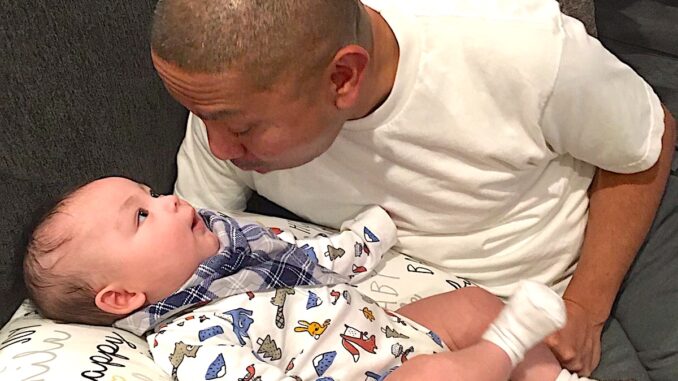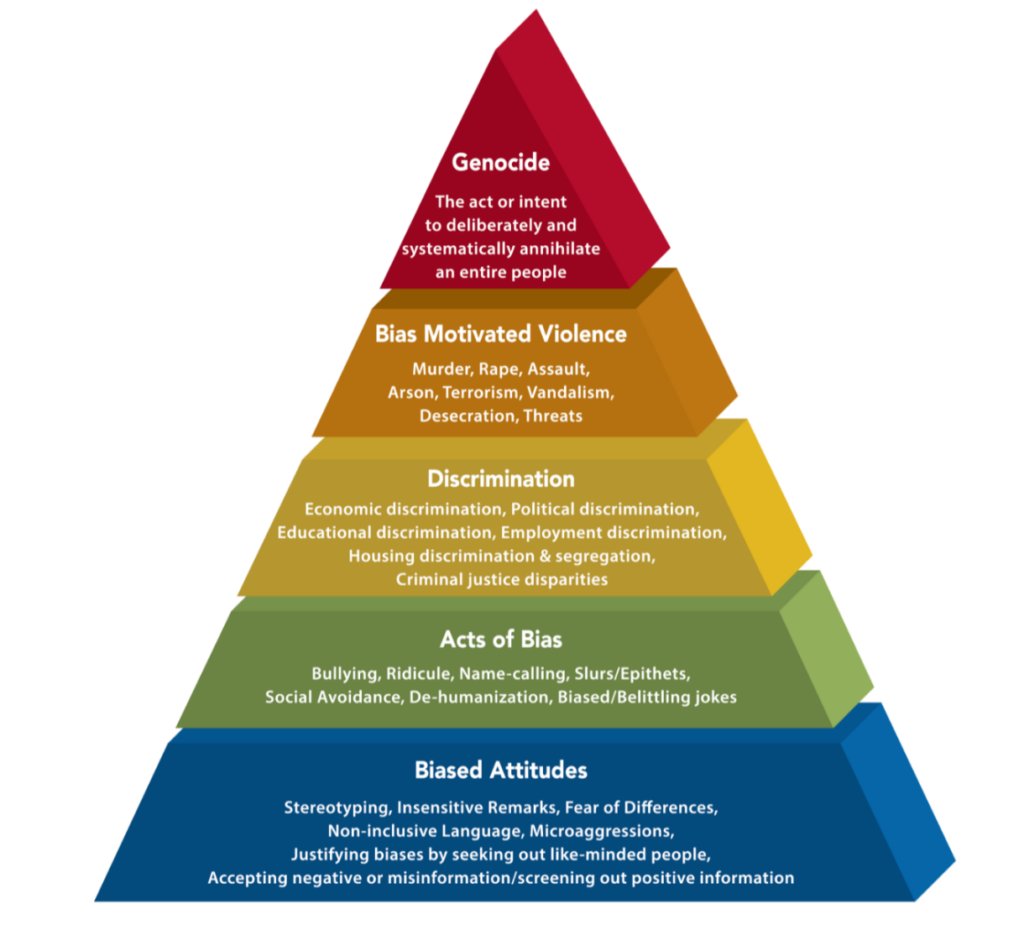
We all notice race from birth.
As babies, we quickly differentiate languages, likely from the sounds we hear while in the womb. Studies show that newborns can identify their mother’s voice and turn towards it. Babies prefer caregivers who speak their native language and more readily accept toys from them.
We recognize faces from infancy and react favorably to our mother or constant caregiver. By three months, we already prefer faces that match our own race. By six months, we associate same-race faces with happy music and different race faces with sad music.
By six to eight months, studies show that we rely on our same-race adults for guidance during uncertainty. We perceive adults with our same race as reliable authority figures.
“Noticing difference, and even the preferences described above, do not inherently indicate a value judgment or bias about those who are different (i.e., less familiar). However, by age two to four, children begin to internalize racial bias.” (Katherine Lingras, Talking With Children About Race and Racism, 2021)
Growing up with diversity
In the US, 25% of all immigrants since 1965 are Asians. There are 22.6 million Asians dominated by the Chinese (except Taiwanese) at 5.1m, Indians at 4.5m, and Filipinos at 4m.
Most Asians are concentrated in California (5.8 million) in the cities of Los Angeles, San Francisco, San Jose, and San Diego. This is partly due to the influx of agricultural workers and miners during the 19th century Gold Rush.
San Francisco and San Jose are part of Silicon Valley, home to tech giants HP, Apple, Facebook, and Google. This area attracts various skilled workers from all over the world, that 57% of its workers are immigrants.
Second in Asian population is New York with 1.6 million, then Texas with 1.4 million. But relative to its whole population, Hawaii has the highest percentage of Asians at 57%. (World Population Review)
Part of SV is Cupertino, where Apple is based. It has a 67.5% Asian population, of which 57% are foreign-born. (US Census)
Half of Cupertino workers have a professional specialty and 92% are white collar. So residents and their school-age children regularly socialize with various Asians from China (28%); India (23%); Korea (5%); and Japan, Vietnam, and the Pacific Islands. Around the neighborhood, they also encounter Whites, Europeans, Hispanics, and other South Asians.
It’s great to see children from many parts of the world come together to learn, play, eat, share, and talk. They learn about each other as individuals and form friendships. Bullying is never tolerated and respect is expected.
“Dialogue is also an important form of interpersonal tolerance and it is an important way to build relationships, interpersonal interaction and communication with other people belonging to other cultures.” writes Dilnoza Arslanovna, who wrote about teaching tolerance in school (2020).
With the spate of attacks against Asians last February, high school students in Cupertino learned about the Pyramid of Hate by the Anti-Defamation League, an alliance that fights antisemitism (see pyramid).

“The Pyramid shows biased behaviors, growing in complexity from the bottom to the top. Although the behaviors at each level negatively impact individuals and groups, as one moves up the pyramid, the behaviors have more life-threatening consequences. Like a pyramid, the upper levels are supported by the lower levels. If people or institutions treat behaviors on the lower levels as being acceptable or “normal,” it results in the behaviors at the next level becoming more accepted.” (ADL)
The first tier begins with Biased Attitudes like stereotypes, insensitive remarks, non-inclusive language, or microaggressions. This is the widest at the base because it is the most common and the basis for racism. We’ve seen how unfamiliarity with other races leads to unconscious bias in babies.
Second is Acts of Bias like bullying, ridicule, name-calling, slurs, avoidance. Once we’ve internalized our bias, it can motivate us to act on our prejudice and attack. If uncurtailed, it can escalate into violence (the Fourth tier).
Third is Discrimination through economic, political, educational, housing, work, and justice systems. This is organized and far-reaching that can last for decades.
Fourth is Bias-Motivated Violence. Hate crimes increase in frequency when society, government, and police do not decry racism. When the public lambasts racial attacks and perpetrators, it constrains attackers to stop. Ostracism is a strong motivator for good behavior. All bias ultimately leads to the peak of hate, Genocide.
“Because children can become quite set in their beliefs by age 10, it is important to begin discussions about race, racism, and bias early.” (Lingras)
Parents, educators, and all adults need to help children understand bias, stereotypes, and race. Tolerance should be integral to their education and upbringing.
Exposure is the key
There’s always hope, especially if we start early. When three-month-old Caucasian babies were briefly exposed daily to Asian female faces, race differentiation disappeared. The babies no longer showed a marked preference for their same-race faces.
This indicates that if we regularly expose babies to different races and faces, they likely will not develop a preference for their same race to the exclusion of other races. We need to start from infancy.
“In many studies that illustrate preferences toward own-race faces, exposure is the key.” (Lingras)
Even adults exposed to other races became more adept in identifying emotions shown by the different-race group, regardless of ethnic or biological ties. (H.A. Elfenbein & Nalini Ambady, 2003)
Knowing how another feels helps foster empathy—the basis for kindness, understanding, and tolerance.
So it’s never too late to open ourselves and our children to other cultures. The goal is to increase our understanding and appreciation of each other. This can remove our bias so we learn to accept all types of people, regardless of how different they seem from us. Maybe we can even make friends based on shared values rather than race.
@IvyDigest
